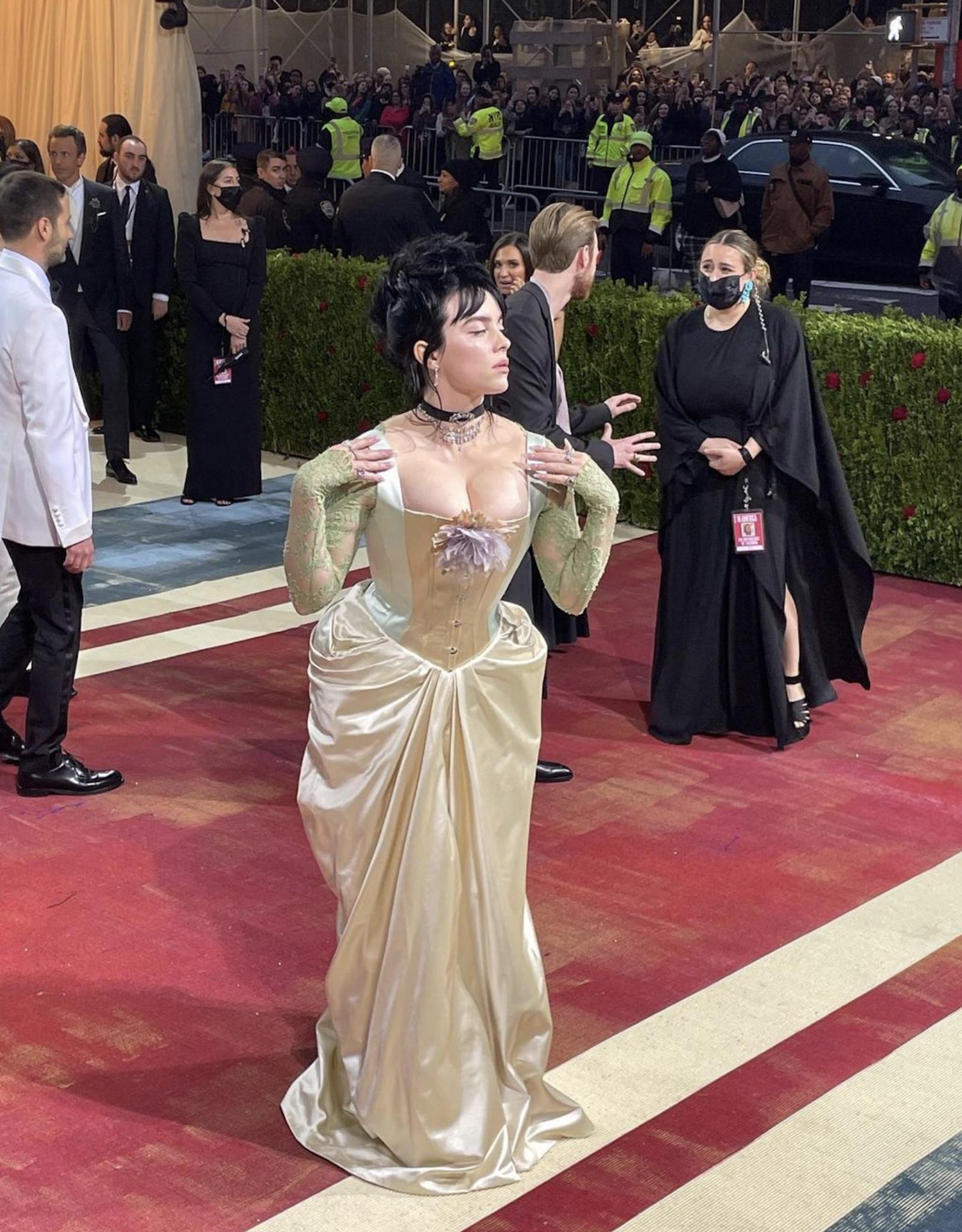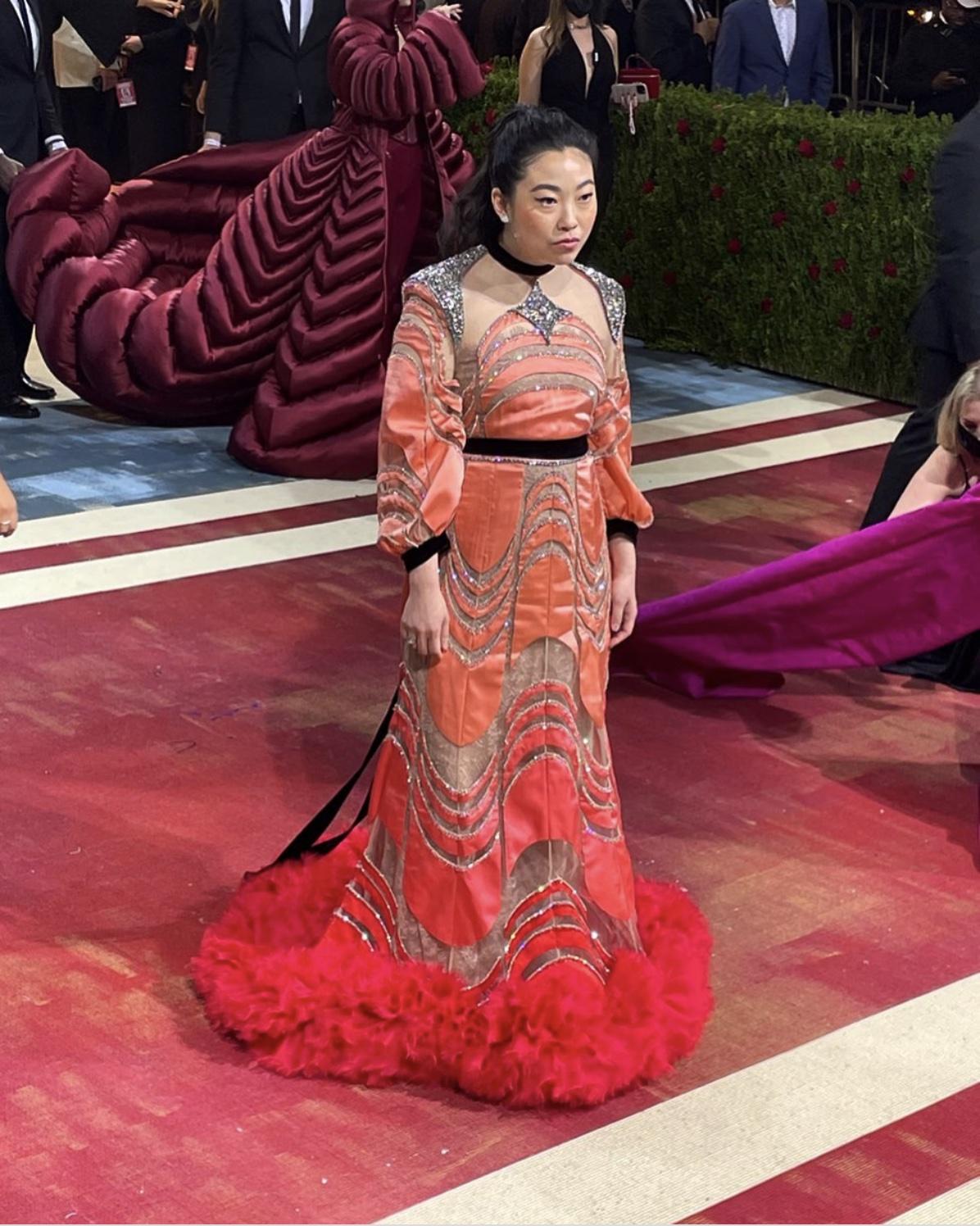Still, frustration persists as the era offers more than glamorous costumes, what with the contemporaneous emergence of garments like the casual tea gown or evening dress. Such pieces featured loosened corsets and were made to provide a slight improvement in comfort to women in casual settings.

Still from The Met's video, Exhibition Preview—In America: An Anthology of Fashion
As has become the case more often than not, the public response to this year’s Met Gala seems to be general disappointment. The negative reviews primarily cite the attendees' inability to dress on theme, especially with a prompt as inspirationally ripe as the Gilded Age.
It should be acknowledged that a good deal of designs from the night did, at least, seem inspired by the correct time period, approximately 1870 to 1900. Billie Eilish, who brought her own modern goth twist to a traditional evening gown, was a particular fan favorite.

Gustave Beer, Evening Gown (White House Dress), 1905.
And then, of course, there is the deeper meaning of the particular moniker “Gilded Age.” Something that is gilded is not golden. Rather, it is thinly coated in gold—typically via paint or gold leaf. Coined by Mark Twain (1835-1910), the term was designed to acknowledge simultaneously the coexisting wealth and corruption that characterized the U.S. throughout the late nineteenth century.
Twain was deeply critical of those who accrued excessive wealth in this period and he never shied away from calling out the connections he saw between such wealth and corruption. As he observed in 1871, “What is the chief end of man?— to get rich. In what way?— dishonestly if we can; honestly if we must.”
The only design that creatively seemed to acknowledge and embody this aspect of the Gilded Age theme was worn by Dove Cameron. The young actress and singer’s dress featured sculptural sleeves that, when Cameron posed just so, created the illusion of a nineteenth-century silhouette. Even better, the thin white caging of the entire garment evokes the traditionally hidden boning of a dress. This detail especially is a fitting nod to the notion of façade, of interior and exterior, that is so critical to the concept of a so-called Gilded Age.
Outside of this design, a true embodiment of the theme seemed, by all accounts, wholly absent from this year’s red carpet. Though disappointing to many, it is not surprising to most.
Despite all of this, the event’s associated exhibition—In America: An Anthology of Fashion, open from May 7 to September 5, 2022—looks like it will be everything the Gala wasn’t. In other words, this is the show to mark your calendars for.
Installed in the Met’s American Wing period rooms, the show will highlight individual U.S. designers and dressmakers from the nineteenth to the mid-twentieth century. It will also feature vignettes designed by eight big-name directors including the likes of Sophia Coppola and Tom Ford. Guided by the “curatorial visions” of Andrew Bolton, Jessica Regan, and Amelia Peck, the contributions of these directors are intended to offer multiple artistic perspectives on the evolution of fashion in America.


























